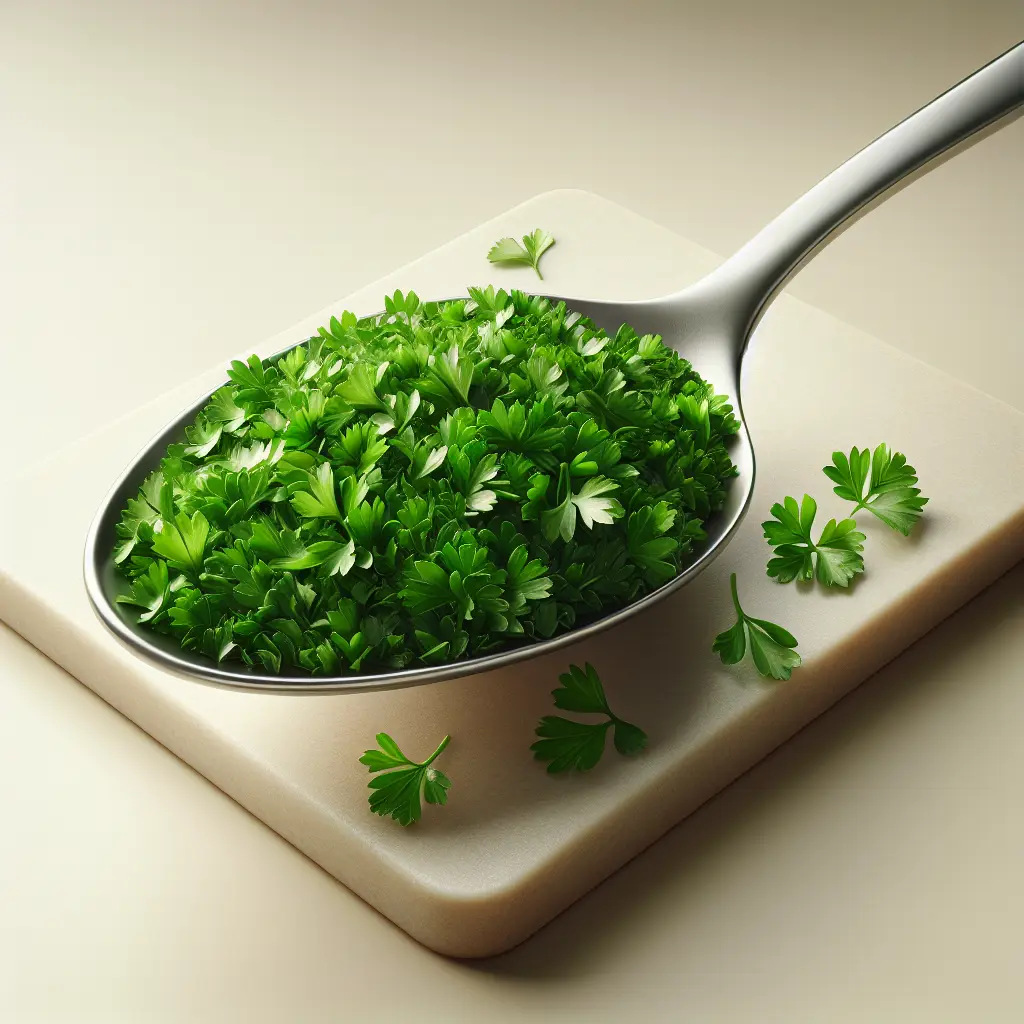Parsley: The Unsung Hero of Herbs
Parsley, often relegated to a garnish, is a culinary and medicinal powerhouse that deserves a place in your kitchen and apothecary. This versatile herb, with its distinctive flavor and abundance of nutrients, has been used for centuries to enhance dishes and promote well-being.
Nutritional Profile
Each tablespoon of fresh parsley packs a surprising nutritional punch:
- Calories: 1.4
- Protein: 0.1g
- Fat: 0g
- Carbohydrates: 0.2g
- Fiber: 0.1g
- Sugar: 0g
This low-calorie herb is a rich source of vitamins and minerals, including:
- Vitamin K: Essential for blood clotting and bone health
- Vitamin C: An antioxidant that supports immunity and skin health
- Vitamin A: Important for vision, immune function, and cell growth
- Folate: Crucial for red blood cell production and DNA synthesis
Health Benefits
Parsley is not merely a culinary delight; it also boasts an array of health benefits:
- Antioxidant Properties: Parsley contains antioxidants, such as flavonoids and carotenoids, which protect cells from damage caused by free radicals.
- Diuretic Effects: Parsley has diuretic properties, meaning it helps increase urine output, which can be beneficial for reducing bloating and water retention.
- Anti-Inflammatory Properties: Compounds in parsley have anti-inflammatory effects, which may help alleviate pain and swelling associated with conditions like arthritis.
- Kidney Support: Parsley is believed to support kidney health by flushing out toxins and preventing the formation of kidney stones.
Culinary Uses
Parsley's versatility extends to the culinary realm, where it adds a fresh, herbaceous flavor to various dishes:
- Garnish: Parsley is a classic garnish for soups, stews, and salads, adding a touch of color and freshness.
- Salads: Finely chopped parsley enhances the flavor of salads, providing a crisp texture and vibrant color.
- Sauces and Dips: Parsley adds a pop of flavor to sauces and dips, such as chimichurri and hummus.
- Soups and Stews: Parsley is a flavorful addition to soups and stews, simmering away to infuse its essence.
Easy Ways to Incorporate Parsley
Incorporating parsley into your diet is effortless:
- Sprinkle on Salads: Add a sprinkle of fresh parsley to salads for an instant nutritional boost and vibrant color.
- Add to Smoothies: Blend a handful of parsley leaves into smoothies for a green boost and antioxidant power.
- Use as a Garnish: Elevate soups, stews, and dips with a garnish of fresh parsley for visual appeal and extra flavor.
- Infuse Water: Steep parsley leaves in hot water to create a refreshing and detoxifying herbal tea.
Parsley, with its abundance of nutrients and health benefits, is a culinary and medicinal treasure. From garnishing dishes to brewing teas, this versatile herb deserves a place in every kitchen and apothecary. So, next time you reach for a garnish, consider the power of parsley and embrace its culinary and therapeutic wonders.
How many calories are in Parsley?
Each 1 tbsp of Parsley contains 1.4 calories.
Parsley Nutritional Information
| Nutrient | Amount per 1 tbsp (3.8g) |
|---|---|
| Calories | 1.4 Calories |
| Protein | 0.1g |
| Fat | 0g |
| Saturated Fat | 0g |
| Cholesterol | 0mg |
| Carbohydrates | 0.2g |
| Dietary Fiber | 0.1g |
| Sugar | 0g |
| Sodium | 0.0021mg |
| Potassium | 0.0211mg |
| Calcium | 0.0052mg |
| Iron | 0.0002mg |
